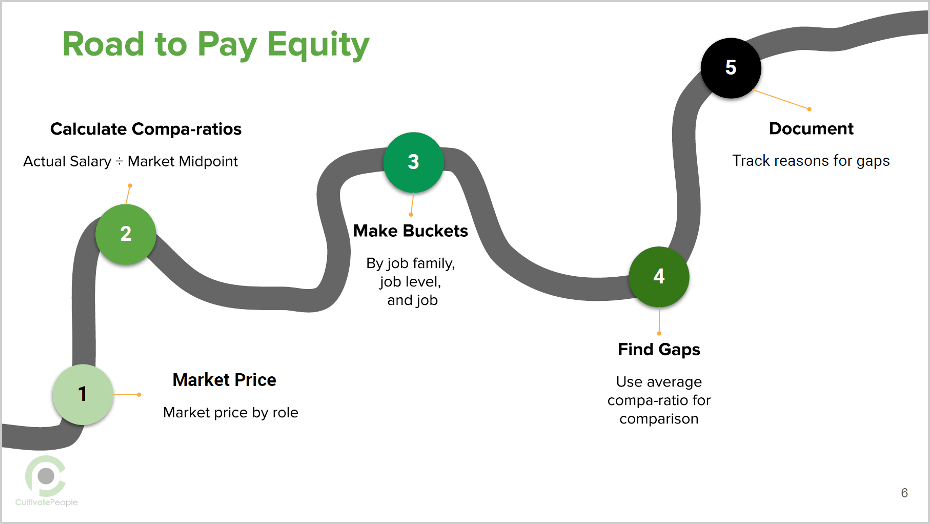Scaling a company starts with the people, but the talent landscape can be highly competitive – especially in the tech industry. ScaleUps and emerging tech companies are competing with “Big Tech” for top talent across all functions. To help differentiate your company and attract – and retain – top talent, you need to ensure your compensation packages are competitive. But what does that look like in action?
While there are many factors to consider when building your compensation packages, here are five key aspects at a glance:

- Market Price: Begin by determining the market salary midpoint of each role. Crowd-sourced surveys like Salary.com or Glassdoor.com can provide a general idea of a job’s market pricings, but they’re unreliable. Find a reliable compensation data source like Kamsa, Option Impact, or Radford and match each of your jobs to their market price.
- Calculate Compa-Ratios: Once you’ve determined the accurate salary midpoints, calculate each employee’s compa-ratio. To do this, take each employee’s actual base salary and divide it by the market midpoint for their role. A competitive compa-ratio is considered between 85% and 115%, and a compa-ratio of 100% means an employee is being paid right at the market midpoint.
- Make Buckets: Start “bucketing” or grouping employees by department, job family, job level, and work location, so you can calibrate employees in the same group (e.g., all Senior Software Engineers in the San Francisco Bay Area). Then, calculate the average compa-ratio within each bucket and compare to each employee’s individual compa-ratio. What does this look like in action? Let’s say the calculated average salary compa-ratio for all Senior Software Engineers (SWEs) in the San Francisco Bay Area within your company is 102%. You would then compare each SWE’s individual compa-ratio to that 102%.
- Find Gaps: Next, identify outliers (e.g., employees that have more than 5% variance between their salary and the average salary within each bucket). Not all gaps identified may warrant an immediate increase. For example, the employee may be new to the role or not consistently meeting expectations. For employees with pay gaps, prioritize high-performers who have the largest pay gap first.
- Document: Be sure to document any reasons why an employee may be significantly below or above the average (e.g., based on performance, experience level, difficult-to-find skillset).
While there are many other aspects to consider when establishing your company’s compensation strategy, these are the five key building blocks to ensure your compensation packages are competitive – and that’s a must if you want to attract top SaaS talent. To learn more about how to create a solid and equitable compensation strategy, please contact HROnCall@insightpartners.com.
ScaleUp Compensation Playbook
Are you an Insight portfolio company? Posted on Insight's GO ScaleUp platform, we encourage you to dive into our playbook to understand the essentials of building a solid compensation program.
ACCESS









